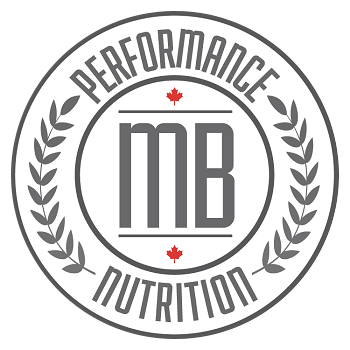Last updated on January 11th, 2024
Blueberries May Help with Muscle Soreness and Recovery
As an athlete, you are likely very familiar with exercise-induced muscle damage (EIMD) or delayed-onset muscle soreness (DOMS). Did you know that a handful of blueberries may be the answer?!
Studies have shown that blueberries may speed muscle recovery when eaten before and after strenuous exercise. Instead of taking non-steroidal anti-inflammatory (NSAIDs) to help reduce the pain and speed recovery, consider loading up on blueberries.
Another controlled study done on endurance athletes found that consuming blueberries daily may significantly reduce oxidative stress and inflammation.
Nutritional Value
Top Nutrients in Blueberries
Blueberries contain high amounts of vitamin C, dietary fibre and are very low in calories – only 44 kcal in one-half cup (125 ml)!
One-half cup (125 ml) serving of raw blueberries contains more vitamin C than nectarines, apples, pears, peaches, plums or cranberries – and provides about 10 percent of your daily recommended amount of vitamin C (75 mg).
| Food Name | Portion | Vit C (mg) |
| Blueberries, raw | 125ml | 7.4 |
| Nectarine, raw | 1 fruit (6.4 cm dia) | 7.3 |
| Pear, raw, with skin | 1 medium | 7.0 |
| Cranberry, raw | 125ml whole | 6.7 |
| Peach, raw | 1 medium (6.4cm dia) | 6.5 |
| Apple, raw, with skin | 1 medium fruit (7cm dia) | 6.4 |
| Plum, raw | 1 fruit (5.4cm dai) | 6.3 |
In terms of fibre, blueberries outrank dried apples, grapefruits, mangoes and peaches – containing two grams of fibre per serving.
| Food Name | Portion | Fibre (g) |
| Blueberry, raw | 125ml | 2.0 |
| Apple, dried, sulphured, uncooked | 60ml | 1.9 |
| Grapefruit, white, California, raw | 1/2 fruit (9.5cm dia) | 1.9 |
| Mango, raw | 1/2 fruit | 1.9 |
| Peach, raw | 1 medium (6.4cm dia) | 1.9 |
And for those who are watching their waistlines, blueberries are the perfect low-cal, nutrient-dense snack. One-half cup (125 ml) of blueberries has the same number of calories as half a grapefruit!
| Food Name | Portion | Energy (kCal) |
| Papaya, raw | 1/2 fruit (13cm dia) | 59 |
| Kiwifruit, raw | 1 large fruit | 56 |
| Pomegranate, raw | 1/2 fruit (9.5cm dia) | 53 |
| Pear, Asian, raw | 1 fruit (5.7cm x 6.4cm dia) | 51 |
| Apricot, raw | 3 fruits | 50 |
| Grapefruit, white, California, raw | 1/2 fruit (9.5cm dia) | 44 |
| Blueberry, raw | 125ml | 44 |
Top Phytochemicals in Blueberries
Blueberries are full of anthocyanins, the phytochemicals responsible for their dark colour and a good portion of their antioxidant power.
In addition to anthocyanins, blueberries also contain ellagic acid – which has been shown to fight cancer – and resveratrol, the same antioxidant in red wine.
Did you know that wild blueberries have more antioxidant power than cranberries, strawberries, plums, raspberries and even farmed blueberries[1]?
Varieties of Blueberries
Most of the blueberries we buy are grown on farms and can grow to be the size of a small marble. Domestically grown cultivated blueberries are on the market from May through September or October. Other times of the year, imported blueberries may be available.
Wild blueberries are much smaller than blueberries that grow on a fruit farm. As compared to farmed blueberries, wild blueberries have a chewier texture and are more varied in colour, ranging from a reddish-blue to a purplish-blue.
All blueberries contain a significant amount of antioxidants, however, the ones with the darker pigments are higher in anthocyanins.
Wild blueberries can be found fresh in Maine or the more northern and eastern provinces of Canada. Outside of the local growing area, blueberries are often available canned, frozen or dried.
Dried blueberries can be found in specialty food markets and many supermarket bulk sections. They provide a concentration of the whole fruit’s nutrients such as anthocyanins.
Keep in mind that the calories in dried blueberries will also be concentrated. Dried, canned or frozen blueberries may also be sweetened – which means extra calories – so check the label for “no added sugar” or “unsweetened”.
Basic Tips
How to Choose Blueberries
Look for firm, deep blue or purplish berries that are not soft or bruised. Wash them right before eating.
The waxy, whitish-gray colouring on the blueberry is referred to as the “bloom” and is a sign of freshness and is a natural protection that helps keep the berry from spoiling.
For frozen blueberries are great when fresh berries are not in season. Be sure that the blueberries rattle around in the bag or container. If they are frozen into a solid clump, it’s an indication that the berries have thawed and then been refrozen.
Be sure to buy only unsweetened blueberries, as opposed to the frozen or canned sweetened product, to reduce the number of calories you consume – and to ensure that you’re enjoying the natural flavour of this delicious fruit!
How to Wash Blueberries
Shortly before you eat them, rinse your fresh blueberries with cool running water and pat dry. Remove any leaves or stems. Then – voila! – they are ready to eat.
Frozen blueberries should be quickly rinsed under cold running water. Then, let them thaw at room temperature for a few minutes before adding to uncooked dishes.
When using frozen berries in cooked dishes, do not thaw and lengthen the cooking time a few minutes.
How to Store Blueberries
Do not wash fresh blueberries before storing them.
Blueberries are the hardiest of all the berries and will last for seven to 10 days if refrigerated.
Before refrigerating, empty the container of blueberries into a bowl and remove any that are crushed or mouldy, then return blueberries to their container. This will prevent good blueberries from going bad too quickly.
As I shared on Instagram and Facebook today, blueberries are one of the best foods you can snack on if you feel tired or exhausted. That’s because blueberries have a high water content to help keep your body hydrated resulting in more energy.
Have you had your handful of blueberries today?
LINK: http://www.precisionnutrition.com/soreness-and-blueberriesReferences:


